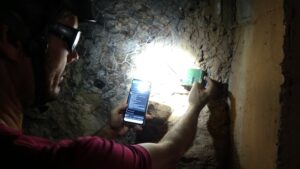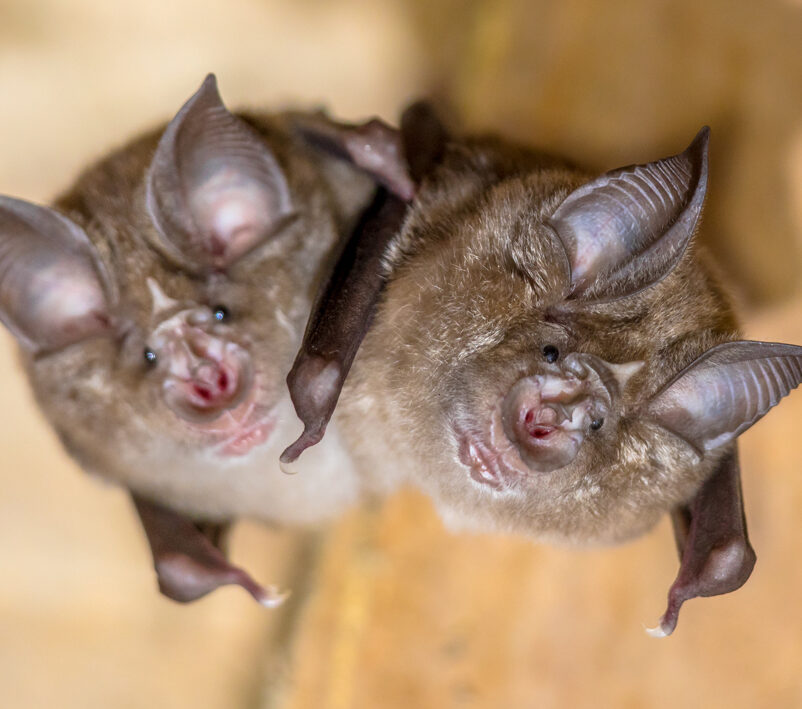A recorder has been installed in one of the tunnels of the hydroelectric power station to record the activity of the bats and thus evaluate their use of the tunnel throughout the year.
The action is part of the Endesabats project, which this year celebrates its tenth anniversary and in which the CTFC and Endesa, work to contribute to the preservation of the species with improvements in the facilities where they live while obtaining valuable data for the scientific community.
The bats feel at home in the Baells hydroelectric power plant. This was recently confirmed by the technicians of the Endesabats project, for the conservation of bats in Endesa’s facilities, who made a technical visit to the Baells power station. A few years after discovering a small colony of bats in the power plant facilities and adapting a gallery for their use, the technicians were able to confirm that the bats are still living in the power plant. Now, with the installation of a recorder in one of the tunnels with the greatest presence of bats, a further step is being taken to obtain more detailed information on their habits and characterization. This project, which Endesa is carrying out with the Forest Science and Technology Centre of Catalonia (CTFC), celebrates its tenth anniversary this year and is part of Endesa’s Biodiversity Conservation Plan.
 An ultrasound recorder has been installed inside the tunnel of the secondary gallery of the power plant (where a greater presence of the species has been confirmed) to monitor the activity of the bats during the night. The objective is to record their activity while interfering as little as possible in their habitat. For this reason, the recording will be distributed among the different seasons of the year to obtain a pattern of their behavior throughout the annual cycle. The information collected will allow for a more accurate characterization of the species and their habits (including the phenology of shelter use), information of great scientific interest and that allows establishing improvements to contribute to their conservation, since all chiropteran species are protected and therefore it is necessary to ensure their conservation. In addition, these mammals are of great ecological importance as insect predators and, therefore, an important ally of agriculture and forestry as pest controllers.
An ultrasound recorder has been installed inside the tunnel of the secondary gallery of the power plant (where a greater presence of the species has been confirmed) to monitor the activity of the bats during the night. The objective is to record their activity while interfering as little as possible in their habitat. For this reason, the recording will be distributed among the different seasons of the year to obtain a pattern of their behavior throughout the annual cycle. The information collected will allow for a more accurate characterization of the species and their habits (including the phenology of shelter use), information of great scientific interest and that allows establishing improvements to contribute to their conservation, since all chiropteran species are protected and therefore it is necessary to ensure their conservation. In addition, these mammals are of great ecological importance as insect predators and, therefore, an important ally of agriculture and forestry as pest controllers.
From the measures implemented about six years ago, which were the installation of three nest boxes to encourage the colony to move out of the control center room of the power plant (where, in fact, the discovery was made), it has been possible to determine which are being frequented more and which less, information that will allow the adoption of measures in the future.
The colony detected in the Baells hydroelectric power plant consisted, at the time of the finding, of individuals of the Pipistrellus genus. In addition to the greater horseshoe bat (Rhinolophus ferrumequinum), the main species living in this area, Daubenton’s (Myotis daubentonii) and, to a lesser extent, lesser horseshoe bat (Rhinolophus hipposideros) were also found.
Last modified: 22 September 2023










